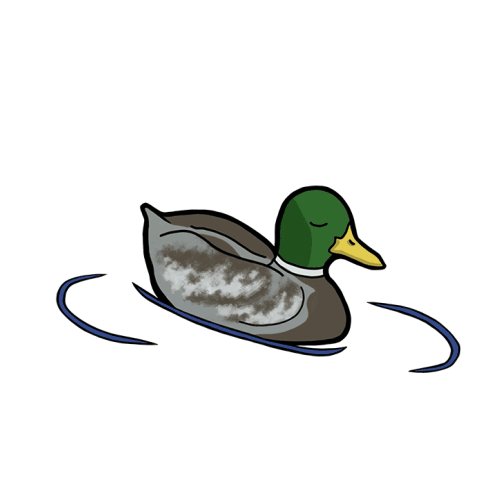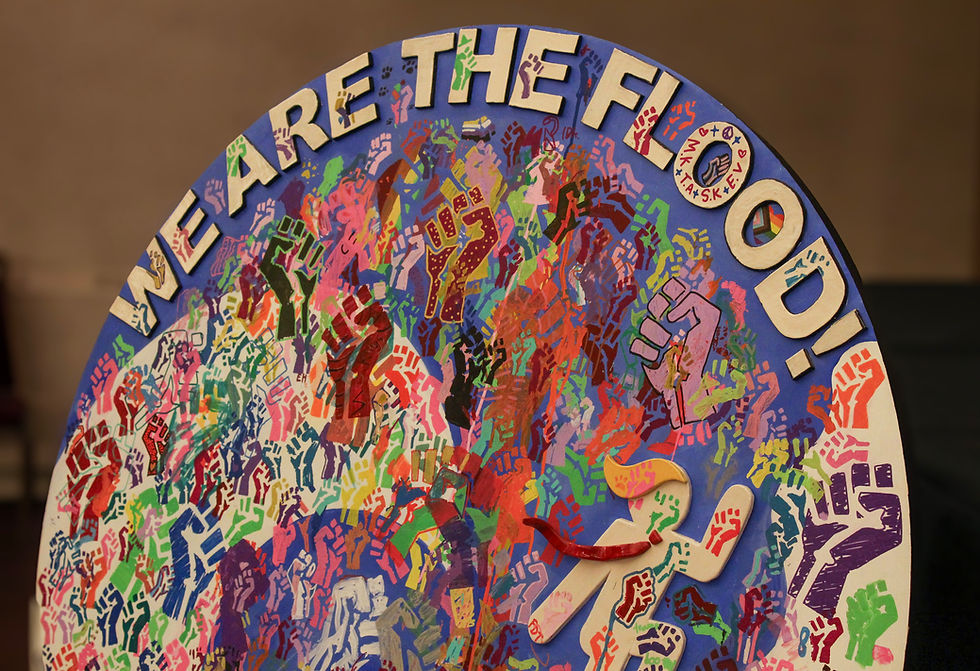Walking Through Willamette’s Indigenous History
- Collegian staff
- Oct 24, 2022
- 4 min read
Monte Remer
Staff Writer

An old tree watching over the parking-lot by the chicken fountain. Boxes of bones in the attic of Eaton. A little flower. A plaque honoring an advocate of genocide. These pieces of Willamette’s past and present were on display Monday, Oct. 10 for the 2022 Indigenous People’s Day tour. Hosted by student-activist Maya Lucero-Romero (‘23) and Willamette Professor of Biology David Craig, the tour began at a sign which read “This IS Kalapuyan Land.”
The Kalapuya are a group who have lived in the Willamette Valley for [thousands of years].
Now, however, the Kalapuya face the misconception that they and their culture have vanished.
“That’s not the case,” Lucero-Romero said. “These Oregon oaks in the parking lot by the chicken-fountain are… pre-colonial oaks. They were here before the first white settlers in the Willamette Valley… even in the parking-lot, the Indigenous culture is still here.”
According to Craig, the oaks were vital sources of food for the pre-colonial Kalapuya. Facing the trees is a map of Willamette, [renovated with CAFES funding] to show that this is a colonial campus.
A right at the chicken fountain: Craig and Lucero-Romero led the group towards the Olin Science Center. They stopped to the side, where Craig searched among countless plants and pulled out a pot.
“This,” he said, “is an Indian paintbrush.” The plant is part of an effort by Craig and Lucero-Romero to renew Willamette’s indigenous ecosystem. A key aspect of the flower, he said, is that it takes more than it gives. It invades the soil of sunflowers and grows into their roots.
Nearby, Willamette’s tall, red-brick buildings of European architecture rose above another sign rooted in the ground reading, “This IS Kalapuyan Land.”
On this Kalapuyan land, along a wall of the Olin Science Center, sixteen Indigenous plants stood above the fallen leaves. Craig explained that each plant was a source of either medicine or food for Indigenous peoples. European settlers targeted both in a campaign of erasing indigeneity. To quote Lucero-Romero, “Most people think that colonialism only happened to the people, but it also happened to the land.”
Both land and people resisted, however. Down the path, Craig and Lucero-Romero stopped at the Star Trees as Craig began to tell a story of endurance.
In the winter of 1852, [Augustus Dowd] was on the hunt. The wounded bear still charged ahead. Then it disappeared behind a snowy ridge. Dowd must have expected a steep, rocky descent in the mountainous country of eastern California, but he gave chase nonetheless. And then he stopped. A massive tree stood in the clearing below, clouds of green needles nearly reaching the clouds in the sky. Craig described how this type of tree—a group of which form a star on the Willamette campus—was originally called wawona by Indigenous peoples. Dowd named it “the Sylvan Mastodon.” Soon after acquiring its European name, the tree Dowd saw was cut down. More trees and people alike were to follow.
In the Gold Rush era, Craig said the genocide of Indigenous people had reached such a point that some settlers believed Indigenous history should be memorialized before every tribe was extinct. The wawona tree was renamed as a memorial, but it became instead a symbol of enduring life.
“We now know of these trees as sequoias,” Lucero-Romero said. The name honors the [Cherokee linguist Sequoyah], who developed an entire writing system for the Cherokee language. Through the Gold Rush and the Trail of Tears, the writing system refused to disappear. In the present, it’s displayed on signs and buildings across the Cherokee Nation, and the name of its founder endures on the Willamette campus today in tall green clouds which together make a star.
Other parts of Willamette’s Indigenous history persisted not because of their enduring life, but because of their pain.
Signs that were seen along the tour from the Five Oaks Museum. Photos by Monte Remer
Craig and Lucero-Romero led the group to a sign in front of the Town and Gown monument. The sign showed the young Indigenous children who worked at a manual labor school, one much [like Willamette University once was].
“We need to recognize that Indigenous legacy,” Lucero-Romero said, “because it’s something this institution tried to take away.”
Continuing the tour, they pointed to Eaton at the right of the sign and talked about the boxes of Indigenous remains kept in the attic, not returned to their cultures until the late 1990s.
Despite this, both Craig and Lucero-Romero said they had to fight with the Willamette administration to call actions against Indigenous peoples an “atrocity” on an informational poster. That poster is currently in Collins 205, but that’s not where the tour went. As Craig and Lucero-Romero described atrocities the Willamette administration refused to name as such, they stopped in front of a rock bearing the name Jason Lee.
The anger Lucero-Romero felt upon seeing the rock in front of Walton was what originally drew them to fighting for indigeneity. The anger was there again, in the crossed arms and shaking heads of everyone on the tour, all reading the name on the plaque. Commemorated on the rock outside Walton Hall is Jason Lee, who wrote in a [March 1836 letter] “...they [Indigenous people] must perish from the face of the Earth, and their name be blotted out from under heaven.” Six years later—in the buildings where Indigenous children were forced to do manual labor—Lee founded Willamette University.
Following the lingering reminders of genocide and forced labor, there was a stark contrast: another story of Indigenous endurance, standing tall and casting shadows over the leaf-covered earth, refusing to become blotted out from under the October sky. “Everybody thought it had died,” Craig said of the tree.
Planted in 2004 where Ford Hall is now, the oak tree was a welcome to speakers including [Wangari Maathai], the first African woman to win the Nobel Peace Prize. When the foundations of Ford appeared in the tree’s place, most people assumed that it was gone forever.
It wasn’t. In fact, it didn’t go very far. In a place just barely out of sight from Ford’s upper windows, the oak was replanted. Its roots now grow into the ground lining the path from Belknap, where first years walk to Goudy and ducks sleep in its shade. It survives.
Near the tree, another sign read “This IS Kalapuyan Land.” In 1856, there were [344 Kalapuya people recorded alive]. Today, in 2022, there are [4,000 Kalapuya people] in Oregon. On the Willamette campus—in the parking-lot, along the walls of buildings, nearly touching the clouds, along paths, and in the work of Indigenous students and staff—indigeneity survives.


















Monte - thanks for the reporting and for capturing much of what we had to share on our campus walk. I won’t speak for Maya but it was not my experience to be in a fight or needing to fight with ‘administration’ to include the word and facts of historical atrocities. The processes was slow, deliberate, thoughtful, and consultative. I was worried that there would be resistance to having a clear acknowledgement of the suffering of Indigenous people but those worries weren’t realized. We have so much more work we need to do and we can celebrate with this project everyone we invited to help did so. Prof David Craig